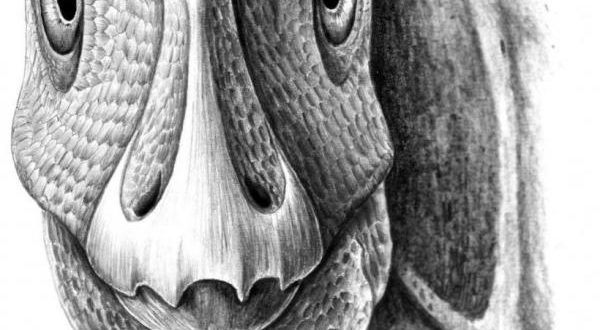Researchers have discovered the first-ever record of a fossil tumourous facial swelling in the jaw of a 69 million-year-old dwarf duck-billed dinosaur.
“This discovery is the first ever described in the fossil record and the first to be thoroughly documented in a dwarf dinosaur,” Kate Acheson, a PhD student at the University of Southampton, said in a news release. “Telmatosaurus is known to be close to the root of the duck-billed dinosaur family tree, and the presence of such a deformity early in their evolution provides us with further evidence that the duck-billed dinosaurs were more prone to tumors than other dinosaurs.”
The fossil was found more than a decade ago in a part of Romania known as the Valley of the Dinosaurs. The deformity had been identified as a tumor, but what caused it had been unclear until now. Micro-CT scans indicated the dinosaur lived with the condition referred to as an ‘ameloblastoma’, a benign growth seen to affect the jaws of mammals and some modern reptiles.
“The discovery of an ameloblastoma in a duck-billed dinosaur documents that we have more in common with dinosaurs than previously realised. We get the same neoplasias,” said Bruce Rothschild, an expert on ancient diseases and injuries who studied the Micro-CT scans.
While it isn’t likely the tumor was painful, the study scientists said this particular dinosaur died before it reached maturity. Since its conserved remains include only the two lower jaws, it’s impossible to determine its cause of death. The scientists said presence of the ameloblastoma may have led to its demise.
“We know from modern examples that predators often attack a member of the herd that looks a little different or is even slightly disabled by a disease. The tumor in this dinosaur had not developed to its full extent at the moment it died, but it could have indirectly contributed to its early demise,” said Zoltán Csiki-Sava, an expert from the University of Bucharest in Romania who led the expedition that uncovered the fossil.
Agencies/Canadajournal
 Canada Journal – News of the World Articles and videos to bring you the biggest Canadian news stories from across the country every day
Canada Journal – News of the World Articles and videos to bring you the biggest Canadian news stories from across the country every day



